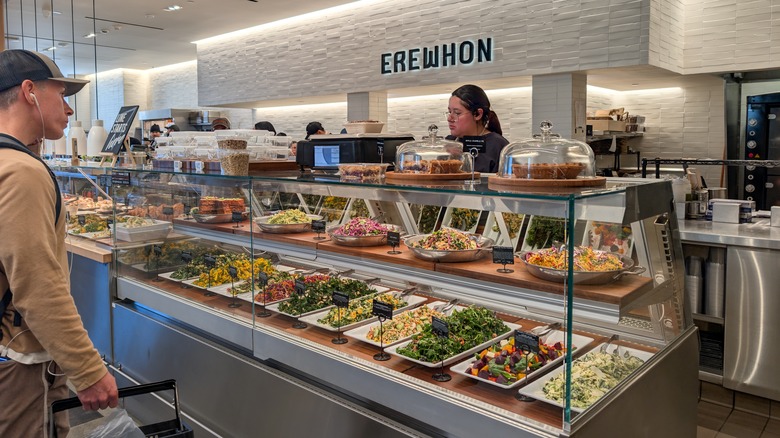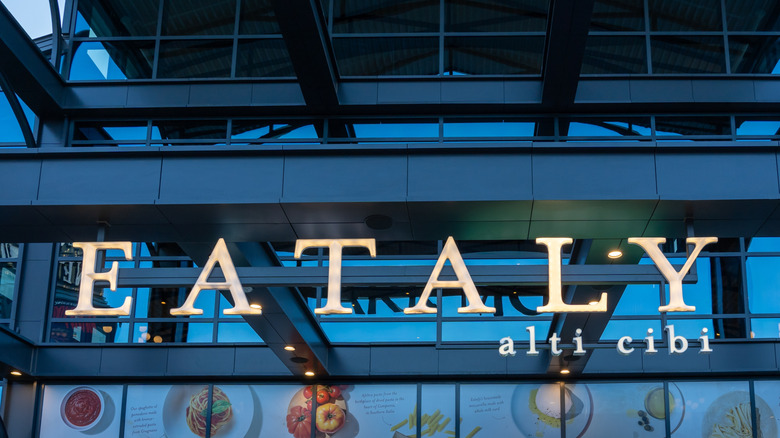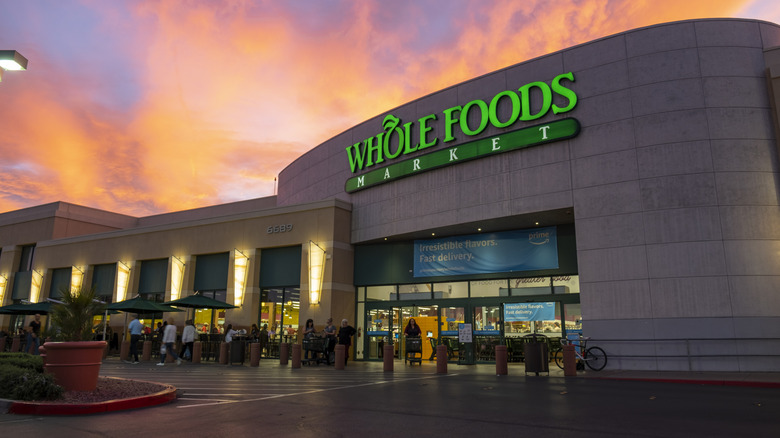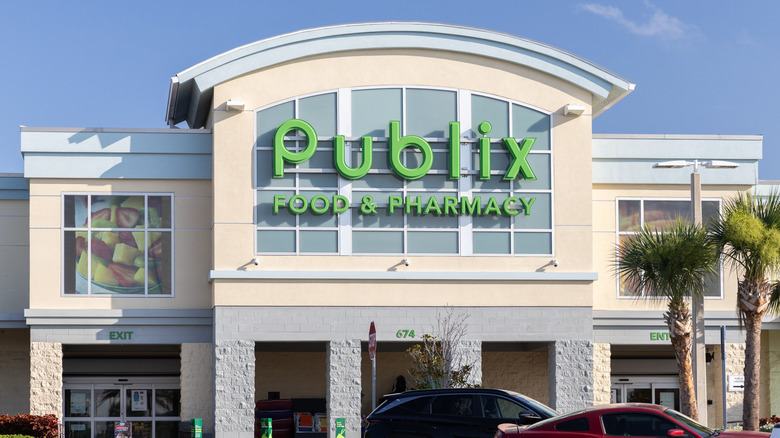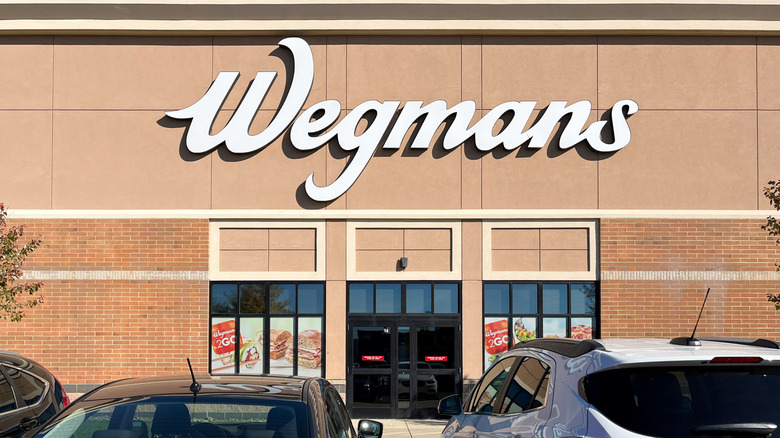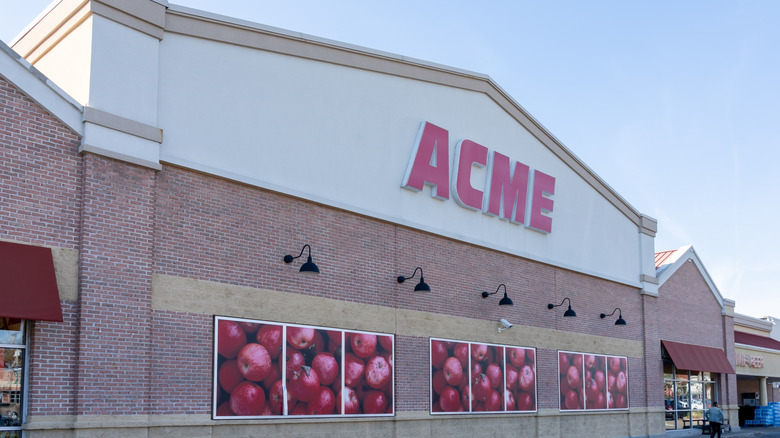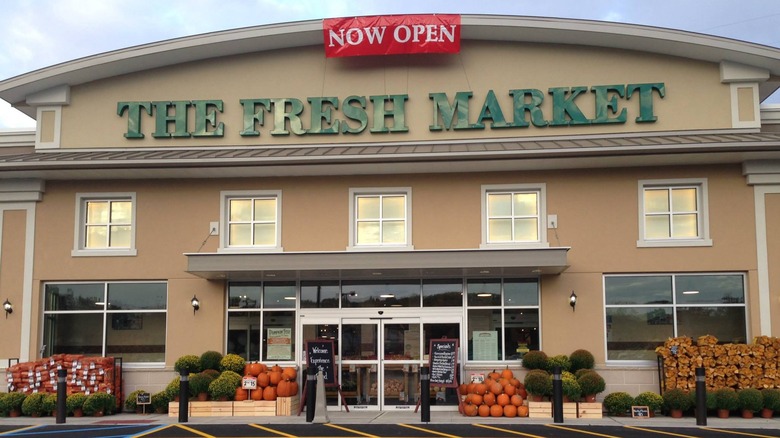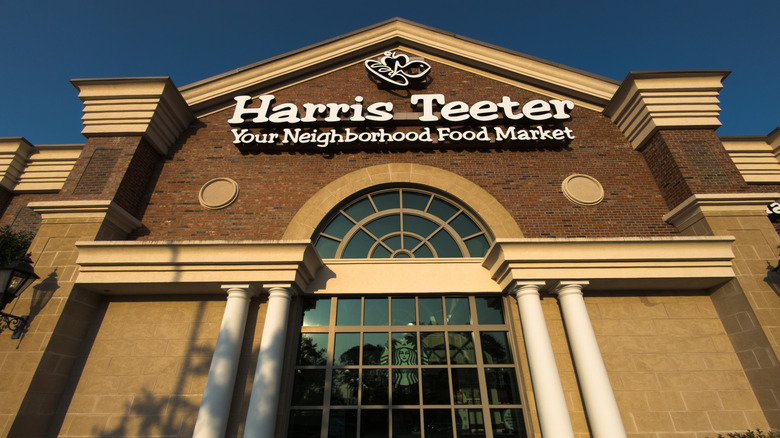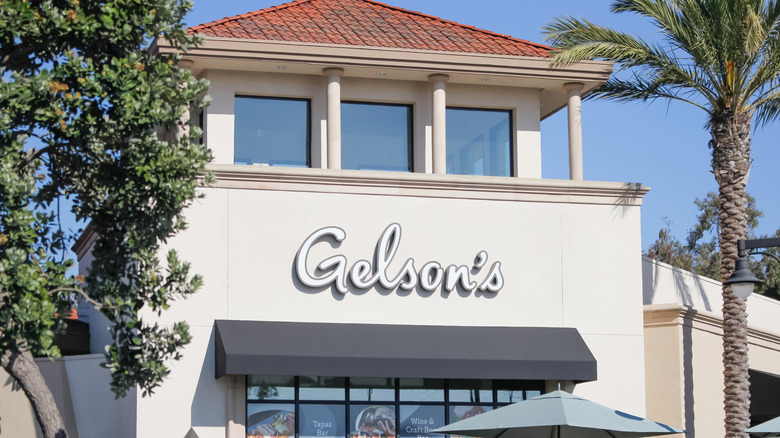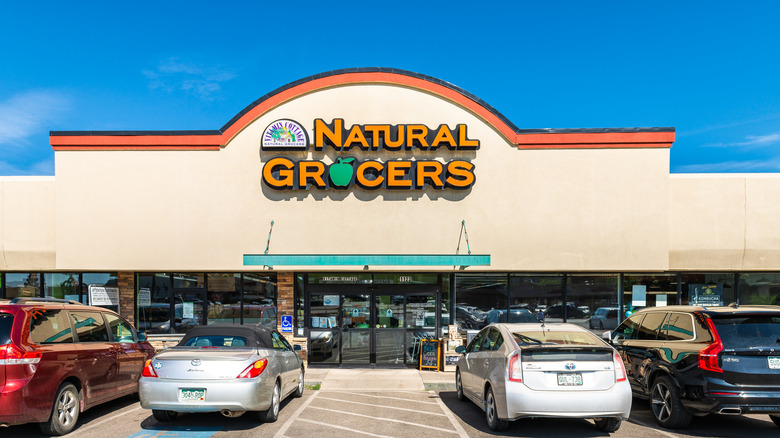The Most Overpriced Grocery Store Chains In The US
The Economic Research Service (ERS) May 2025 forecast predicts that food prices will increase by 2.9% over the course of the year. This comes on the back of inflation and sky-high grocery bills we have been dealing with post-pandemic. In short, eating well certainly hasn't been getting any cheaper.
In these uncertain times, it might be surprising to know that there are some grocery stores and supermarket chains that continue to thrive despite their higher prices. Yes, the fancy ones with mood lighting and $20 smoothies. But they've got several tricks up their sleeves. From loyal customers to pretty packaging, they coast on the belief that when you shop with them, you are getting better stuff than elsewhere.
That said, if you're one of the many folks trying to make your paycheck stretch a little further, changing your shopping habits could make all the difference. According to U.S. government data, Americans spent 11.2% of their total income on groceries in 2023. That's a big chunk, and cutting back here and there can really add up. So, if you're looking to trim your food budget, here are some of the most overpriced grocery chains in the U.S. You might want to avoid them if you're not looking to blow your whole budget on artisanal cheese or fancy water.
Erewhon
With humble beginnings in Boston circa 1966, today Erewhon has grown into an LA-based specialist market that is beloved by celebrities and influencers alike. From selling natural foods way before organic was cool, it has become what one YouTube video described as "part grocery store, part venture capital firm for wellness brands, and part social club for the wellness elite."
With its fame spreading far and wide, it is no surprise that Erewhon is widely considered one of the most expensive grocery stores in the world. We are talking $19 for a single strawberry and $43 for a bottle of extra-virgin olive oil. Shopping for bits and bobs at Erewhon can easily cost more than a meal at a restaurant. Grab a bite from the hot bar or smoothie counter, and you might need a second job or at least a deep breath. Then again, maybe that's just the price of potentially spotting a Kardashian in the wild.
One reason why Erewhon probably gets away with such high prices is the sheer range of products it has on offer that are not available elsewhere. That and the fact that "healthy," "clean," or "biohacked" labels have become a full-blown lifestyle flex. Have a $20 Hailey Bieber smoothie in your hand? It's basically the Chanel sunglasses of the grocery world: an easy entry ticket in the luxury wellness scene.
Eataly
While not a true grocery store chain, Eataly is more of an Italian gourmet market and restaurant chain that sells Italian foods. It was founded in 2007 by Oscar Farinetti, a proponent of the slow food movement. The first Eataly opened in Turin, Italy, and since then has gone global with numerous outlets in places as diverse as Japan, Saudi Arabia, Turkey, and Korea. The first opening in the United States was in New York, and it has since grown to 10 stores in North America.
A lot of the products are imported directly from Italy, while others like the fresh pasta are made in-house. Eataly specializes in Italian cuisine, so you won't find your usual grocery staples here. Most stores offer a range of fresh produce grown locally, and the meat and seafood counters look like they belong in a Michelin-starred kitchen. But fair warning: Those pretty displays come at a price. Case in point, Atlantic salmon is over $25 per pound.
Of course, any place this expensive will have its detractors. One Redditor claimed that the pizza at Da Michele is better (which may or may not be true, but that's besides the point). The bottom line is that shopping at Eataly is pricey, and one shouldn't expect otherwise. Between the imported wines, artisanal cheeses, and inflation, it's best saved for special occasions or just wandering the aisles pretending you're in Milan or Rome.
Whole Foods Market
One of the largest grocery food chains in the country, Whole Foods has over 500 outlets in the United States and a presence in all but six states. Its focus is on selling organic and natural products, all of which must meet the brand's exacting quality standards. But these criteria come with a hefty price tag, which is why Whole Foods has a reputation for being one of the most expensive grocery stores in the country.
There is no denying that the interior of Whole Foods is very appealing, with spacious and well-planned layouts that often feel more like a boutique market than your average supermarket. Ever since Amazon acquired it in 2017, the brand has been trying to rid itself of the "Whole Paycheck" moniker, but that will take some doing. Since then, the chain has set out to make organic groceries a lot more affordable and has expanded on its list of in-house label products.
To be fair, prices have come down, but affordable is still relative. Organic products cost more by nature, and Whole Foods remains very much a premium brand. A 2023 study by the Philadelphia Inquirer found that Whole Foods was still one of the two most expensive grocery stores in the country based on the price of 18 basket items. So while Amazon's cost-cutting efforts have made a dent, they haven't exactly transformed Whole Foods into a bargain-aisle haven.
Publix
Publix is an employee-owned grocery chain based in Florida and popular throughout the southeastern U.S. Its popularity seems a bit of a mystery since prices are noticeably higher as compared to other grocery chains such as Walmart or Lidl, yet customers keep coming back. Whether it's clever marketing or just customer loyalty, Publix seems to have cracked the marketing code.
When you start comparing prices, though, the sticker shock is real. A Redditor pointed out that a box of family-size Cheez-It costs $4.98 at Walmart but a whopping $8 at Publix. That's a premium of 60%! Another shopper compared the prices of similar items at Publix and Lidl and found that he spent $40 less on groceries at Lidl compared to Publix. This difference in prices was almost across the board, including fresh herbs, vegetables, and meat. For example, even on sale, Publix's price for chicken thighs was higher than Lidl's by $1.
Other Redditors talked about how poorly the company pays its employees, which paints the brand poorly, especially when you consider the higher margins. Publix, however, seems rather unfazed by all the criticisms and soldiers on, charging higher prices than its competitors, while its loyal fans keep filling their carts.
Wegmans
The name Wegmans brings to mind a gourmet wonderland, with sprawling sections of ready-to-eat meals, a massive cheese shop, a sushi counter, and even in-store dining options. And all this with a variety of grocery aisles to shop from too. The vibe is unique and leans toward a European-style upscale shopping experience. For many, the sheer variety on display can be bewildering, especially if you are new to the store.
So, is Wegmans actually expensive, or does it just feel that way? Turns out it's a little bit of both. The extensive range of products means that some items are at the higher end of the price spectrum compared to regular brands. And even though not everything on the shelves will drain your bank account, the products on display are attractive enough to tempt you into spending more than what you planned.
Some customers say Wegmans is worth it for the quality and variety, but others remain unconvinced. On a recent Reddit thread, someone called out the hot food bar for charging $15.99 per pound. These inflated prices were also confirmed by a Consumers' Checkbook survey that found Wegmans' prices to be 18% higher than the all-store average. Sure, the quality might be top-tier, but for folks watching their grocery budget, that extra percentage can be hard to justify.
Acme Markets
A staple of the grocery industry in the Delaware, New Jersey, and Pennsylvania region for over 130 years, Acme Markets has been on the receiving end of a lot of negative press of late. If Reddit reviews are anything to go by, one would be hard pressed to find a single redeeming factor in favor of the chain. From crappy service to dirty shelves and high prices, Redditors seem to take delight in trashing it. One reviewer went so far as to accuse Philadelphians of Stockholm Syndrome because of their love for the grocery store chain. So what's the score with Acme, and are the prices actually higher than at other chains?
A survey by Consumers' Checkbook of the different grocery chains in the Delaware Valley region found that Acme's overall prices were higher than the average by about 12%. Not only were the prices higher, but the quality was substantially lower than the average. That's a tough pill to swallow for anyone hoping to shop local and save a buck. With its recent acquisition by Kroger, the largest supermarket chain in the country, there are expectations that prices will come down, and shoppers are crossing their fingers for better prices and a more pleasant shopping experience. But for now, Acme struggles to keep its footing in the competitive grocery store chain industry.
The Fresh Market
The Fresh Market, launched in 1982, was inspired by the open-air markets found in Europe. Its goal is to provide quality products to consumers, and on this front, it more than delivers. Its diverse range of items, such as fresh flowers, specialty cheeses, and other premium products, sets it apart from more conventional grocery chains. The stores are strategically located in more affluent neighborhoods, with noticeably bumped-up pricing.
Voted by USA Today readers as one of the best grocery store chains in the country in 2024, it's also one of the more expensive ones. The management seems unconcerned about the "expensive" tag. "We aren't looking to be a natural grocery store, we are looking to be a specialty store", says their CEO, Larry Appel. The target consumer base seems to be high-income consumers in wealthy neighborhoods, and people who value premium products (i.e., the high-income shopper who doesn't blink at $20 cheese or a $50 roast). Translation? If you're on a budget, you're probably not the target audience. The Fresh Market caters to those who see grocery shopping as an experience and don't mind paying for the privilege.
Harris Teeter
With over 250 stores across the southeastern United States, Harris Teeter is a popular grocery chain that promises top-notch products and services. The company prides itself on the quality of the meats and seafood it has on offer, as well as its deli, bakery, and wine sections. There is also a prepared foods section where you can get sushi, pizza, and salads if you're in the mood for a quick (and pricey) bite.
Harris Teeter has long been associated in the same "expensive but nice" grocery chain category as Whole Foods and The Fresh Market. Since being bought by Kroger in 2014, some shoppers even insist that prices have slowly increased without the matching bump in quality, variety, or service. According to some reviewers, Harris Teeter is not worth the premium, mainly because of quality issues and lax services.
Others argue it's still worth it for the convenience and selection, especially if you know how to work the system. There are deals to be had if you are willing to hunt for them. The weekly VIC (Very Important Customer) and eVIC specials can throw up a bargain, and many regulars take advantage of them. But if you're watching your budget like a hawk, it may not be your go-to spot for everyday groceries.
Gelson's
Another very upscale grocery store in Southern California is Gelson's. It started in 1951 in Burbank and has since expanded into a chain of supermarkets that prides itself on its top-shelf produce, picture-perfect meat displays, and white-glove service. Naturally, all at premium prices. If you thought browsing at Whole Foods was an indulgent day out, Gelson's feels like a luxury private shopping experience. The chain openly claims to cater to the discerning customer, and everything about it, from the quality of service to the range of products, attests to this fact.
The prices of the products act as a filter that helps keep them exclusive. Do not be surprised at eggs that cost $6.99 and more a dozen, or the same amount for a gallon of the least expensive milk. Prices at the prepared food section can run from $15 upward for a takeout meal. Sure, it's delicious and beautifully packaged, but when your grocery bill starts looking like your dinner-for-two tab, it stings. While it may not be as dear or have the same social cache as Erewhon, Gelson's still brings serious luxury vibes, and for Californians trying to stay within a limited budget, it's probably best admired from afar (or reserved for very special treat-yourself days).
Natural Grocers
Natural Grocers is a chain that is riding the current trend of clean eating. To be honest, it has been doing this since before the concept even became cool. Founded by Margaret and Philip Isely, who launched the business after a personal health scare, the goal was simple: help people eat better and feel good as a result.
To this end, the chain claims to stock only 100% organic produce, 100% pasture-based dairy, 100% free-range eggs, and only conscientiously and humanely raised meats. As is stated proudly on the website, it sells only the best natural, organic, gluten-free, GMO-free, and vegan foods in every department of the stores. The household and body care products are termed as "ecologically thoughtful," and the chain even has in-house nutritionists or Nutritional Health Coaches to advise you on the healthiest ways to spend your money. In addition, it refuses to carry a list of ingredients because of how they are grown, produced, and processed.
Of course, organic anything isn't cheap, and Natural Grocers is no exception. The brand, however, makes no apologies for its prices and, with its focus on service and product quality, has developed an ever-expanding and faithful customer base. If you are looking to cut costs and make ends meet, though, you might want to give it a miss.

